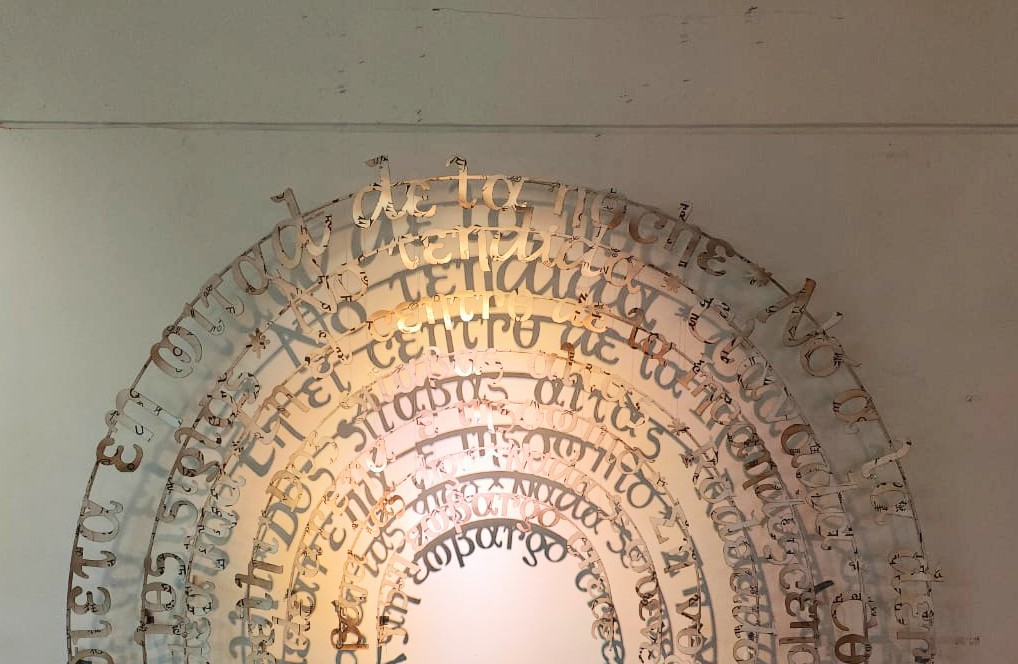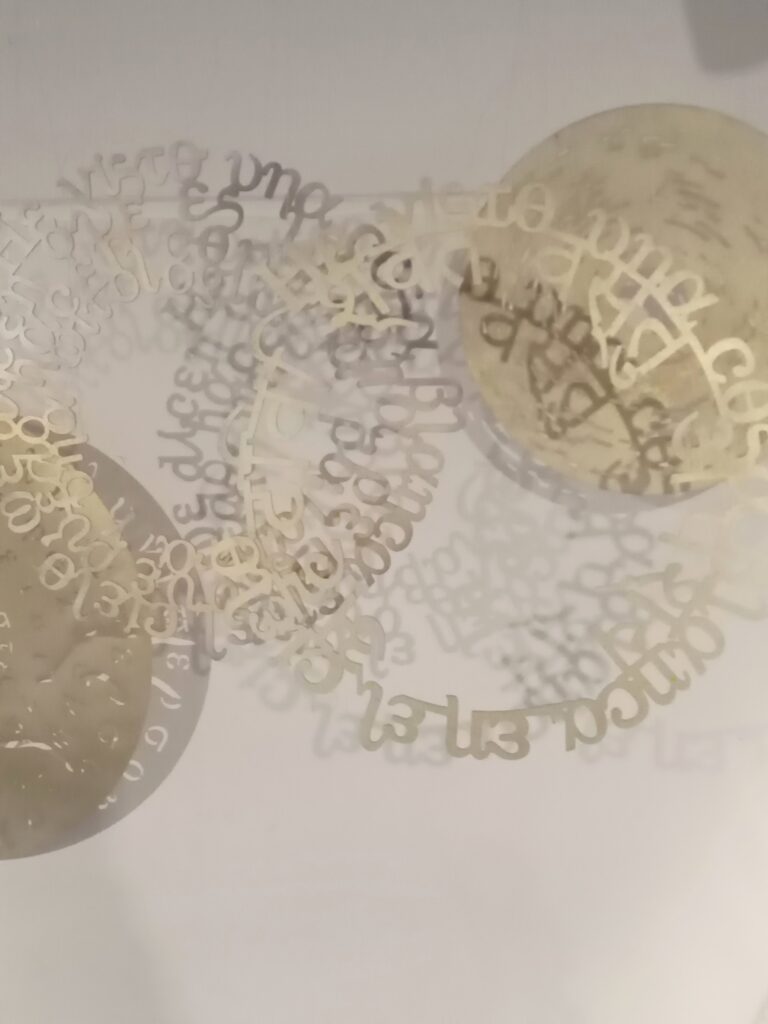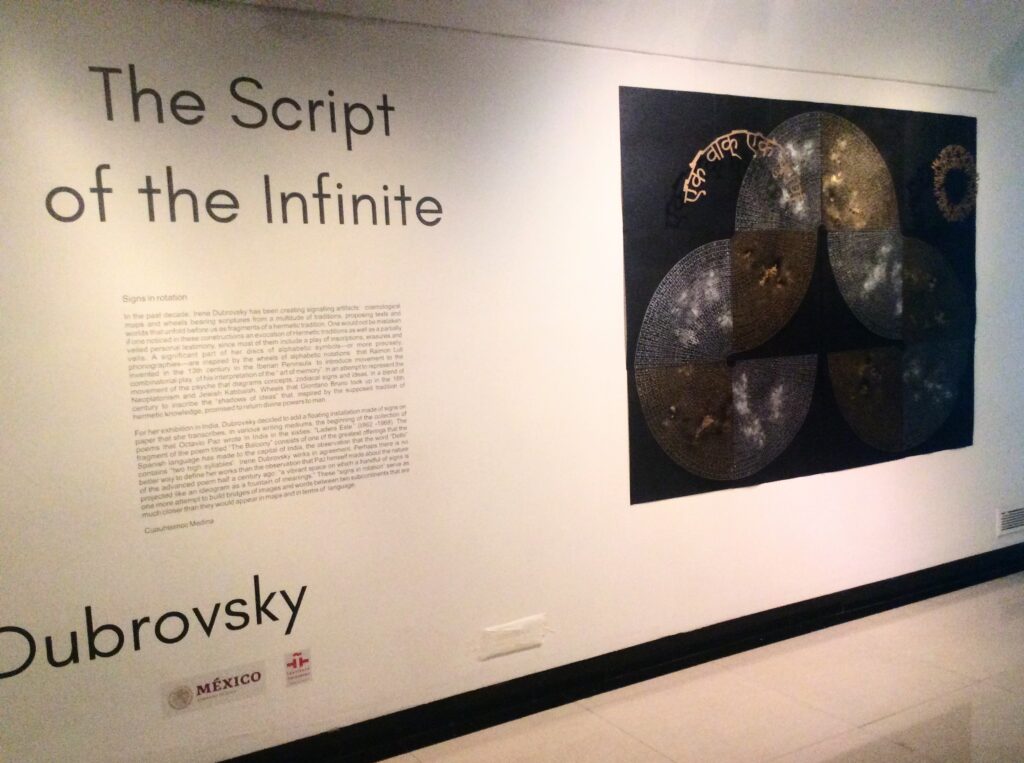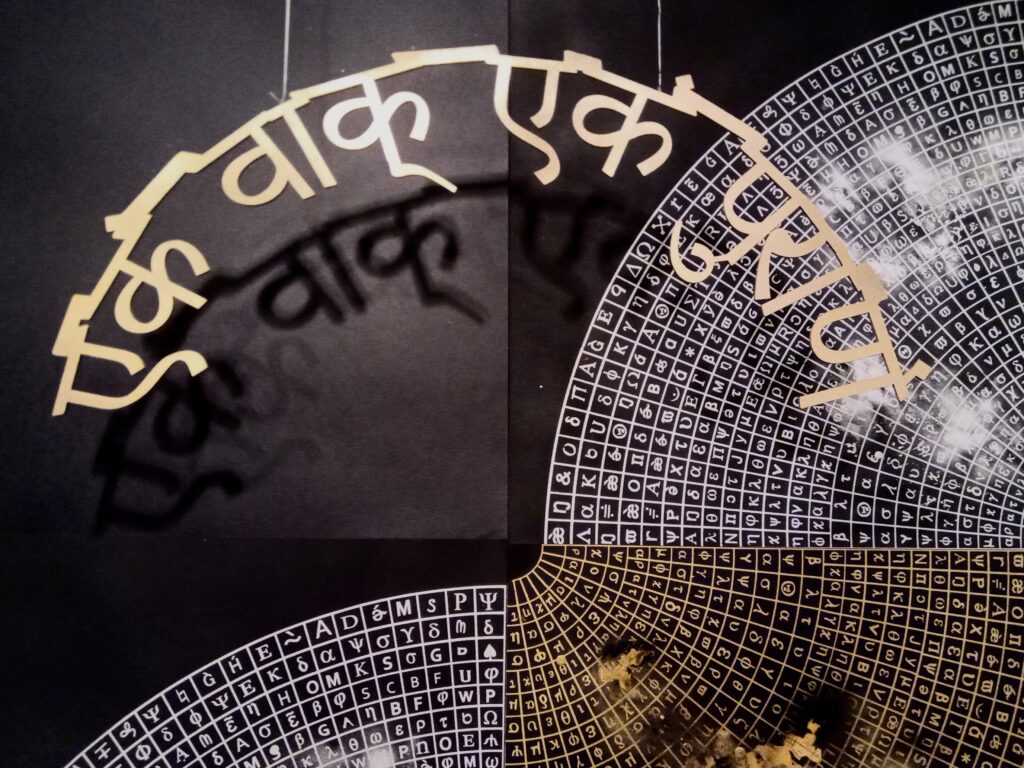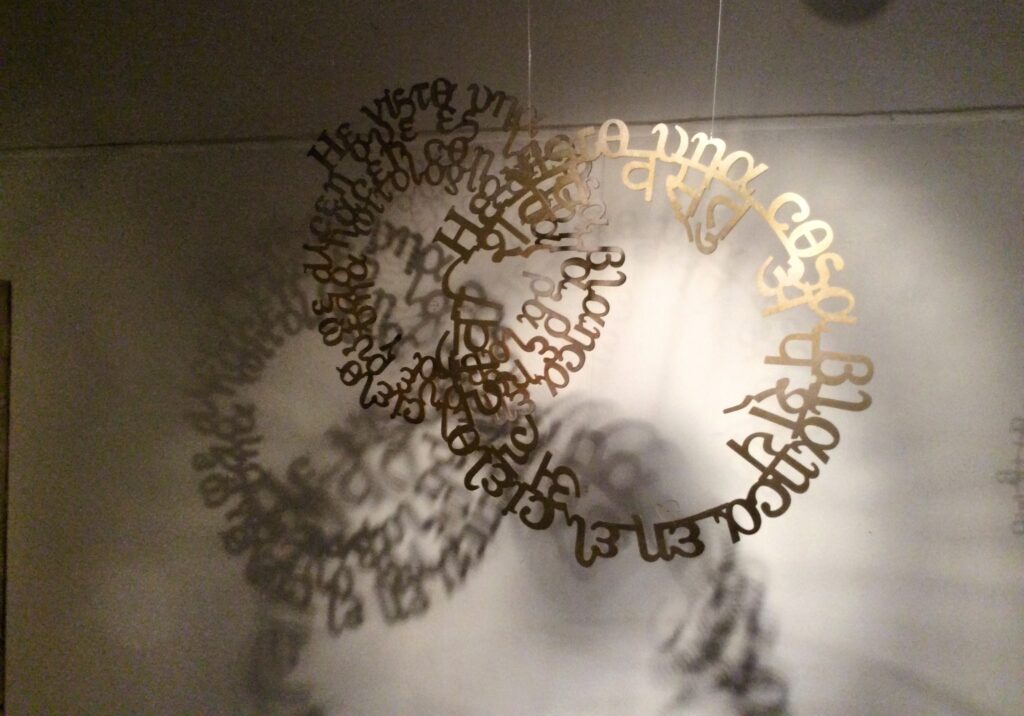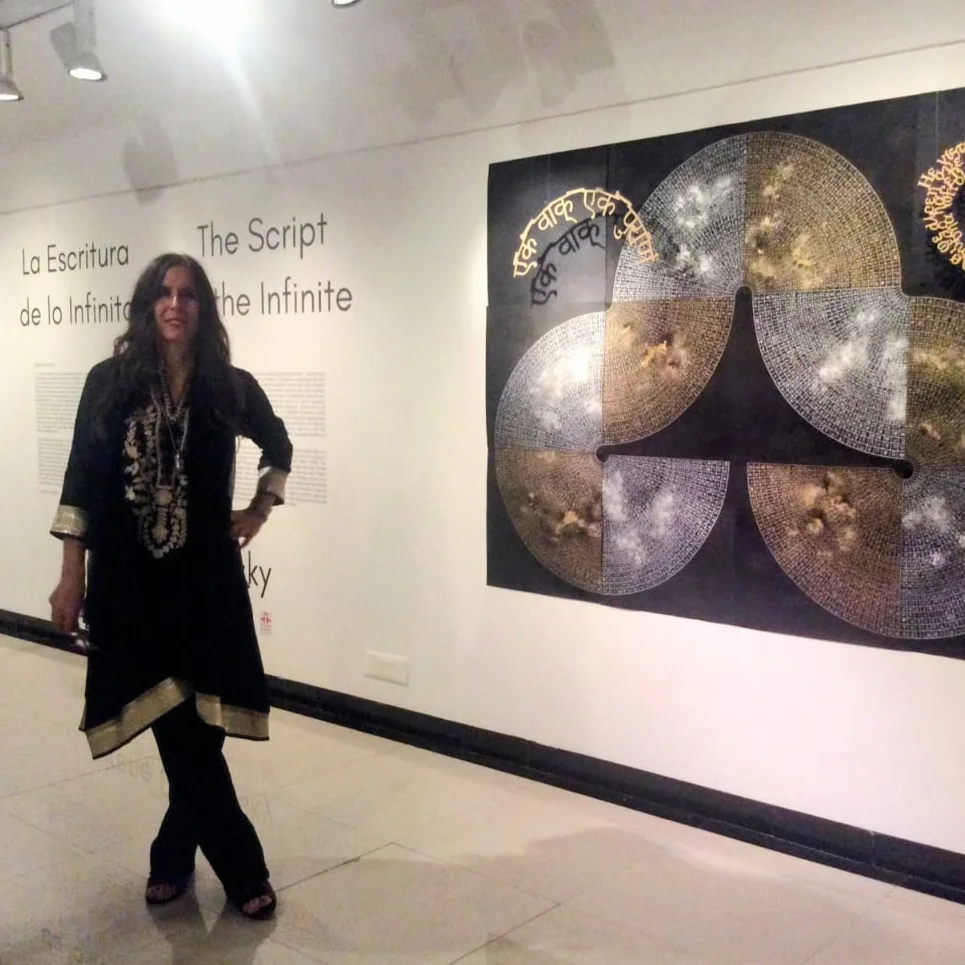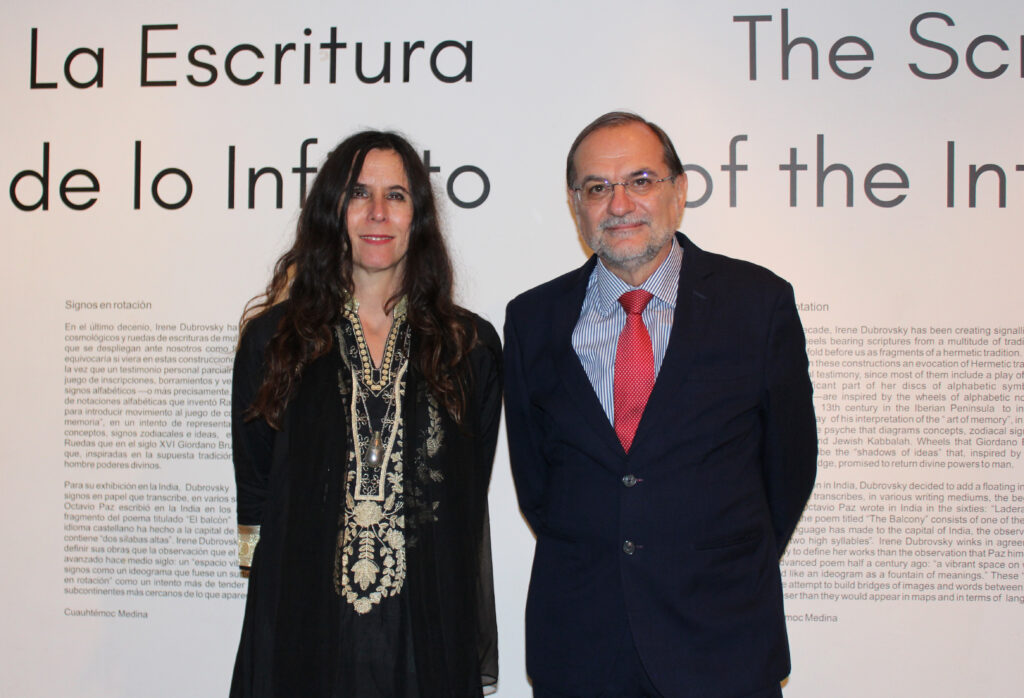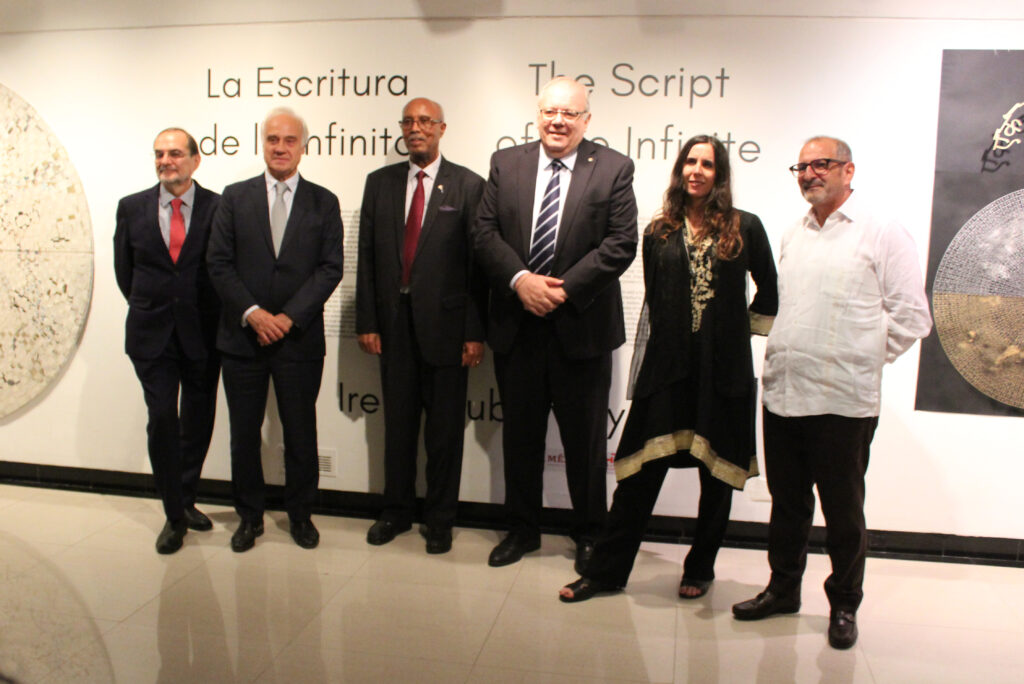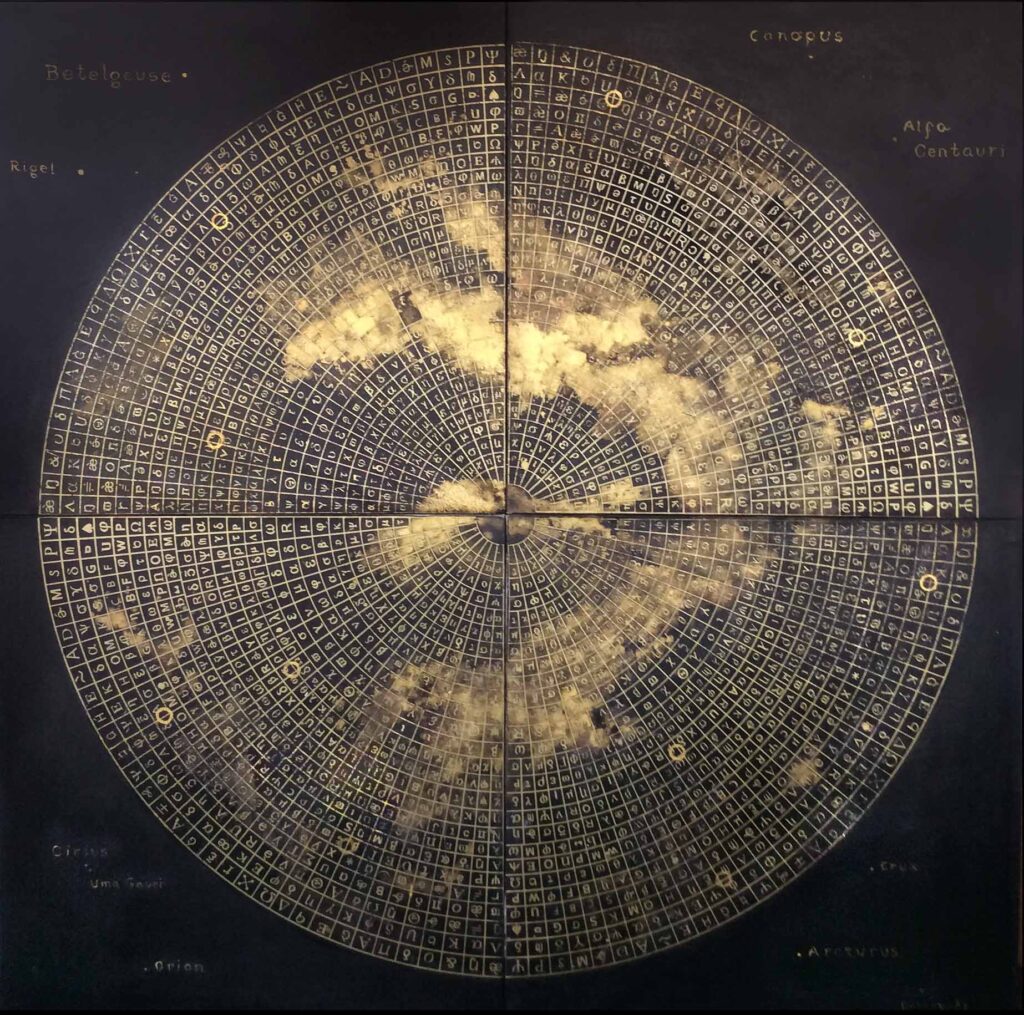
The Script of the Infinite
The Instituto Cervantes in New Delhi.
Its halls will house a collection of recent works by the artist in the exhibition titled “The script of the Infinite.” The Argentine-Mexican artist creates pieces that combine traditional and contemporary techniques, textile art, painting, and video.
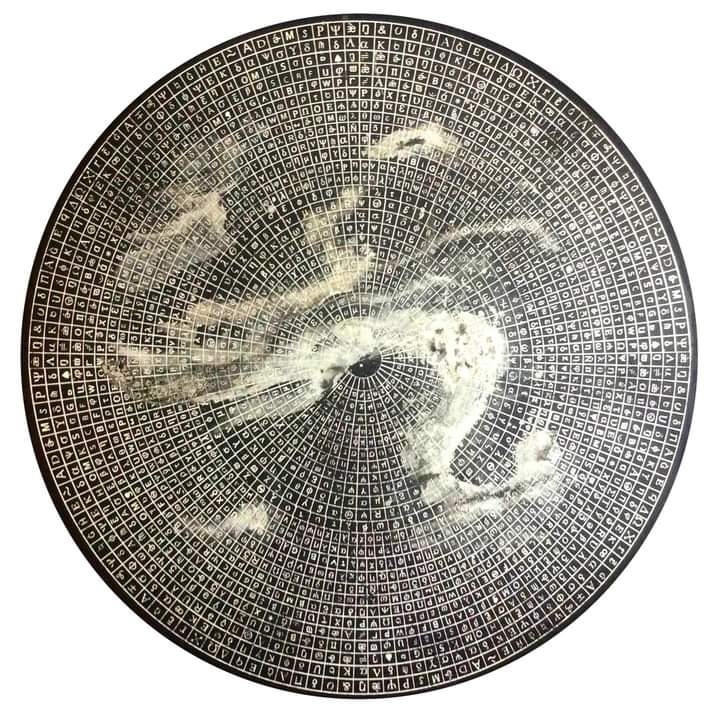
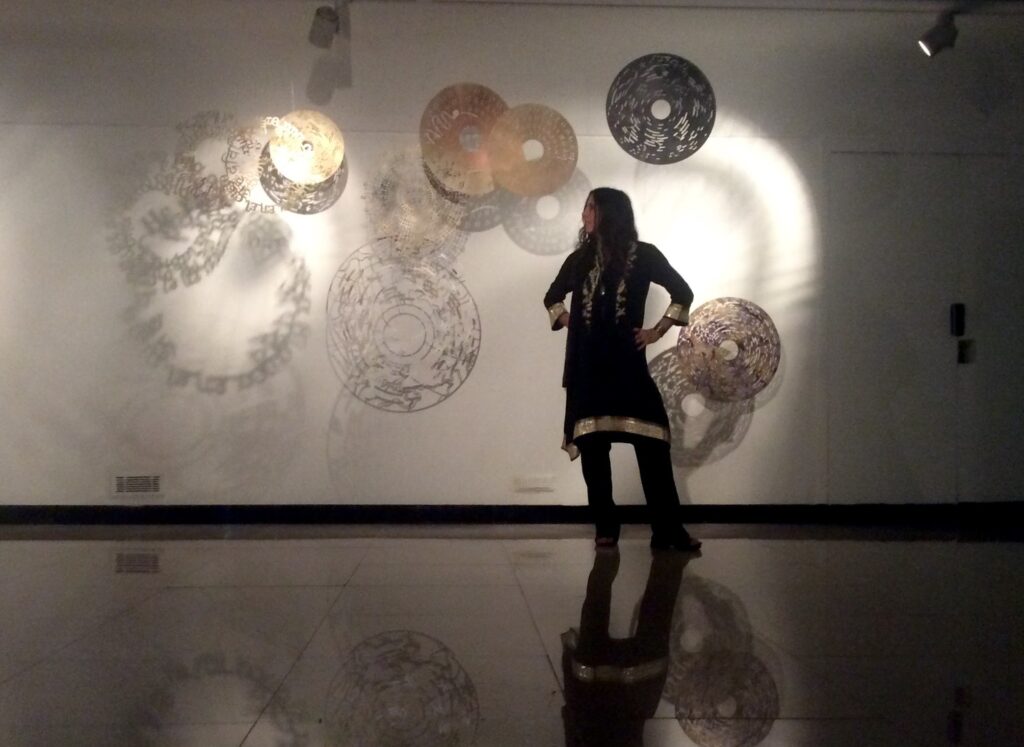
The works lead us into the realm of the encrypted. In the circles of signs drawn by the artist, the Greek and Latin alphabets intermingle, hinting at the infinite combinatory possibilities of language.
The Wheels recall the cycles of time, seemingly rooted in some shelf of the Library of Babel where hieroglyphs inhabit musical staves with calligraphic elegance.
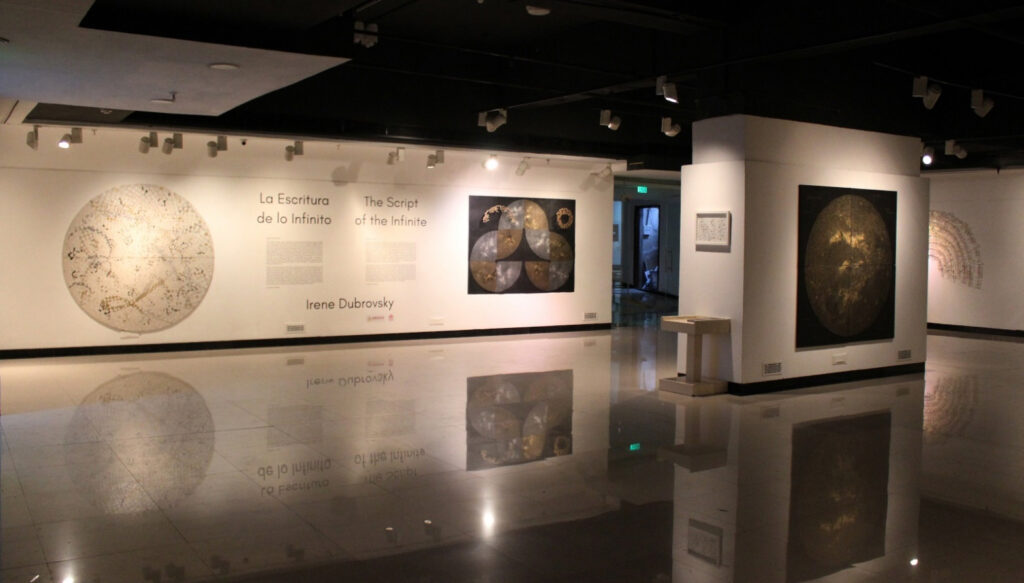
The “Discs of the Stars” mark the 0position of each point of light, interpreting them as a musical score and synthesizing the expanded temporality of the stars into a more comprehensible dimension for the finite human experience.
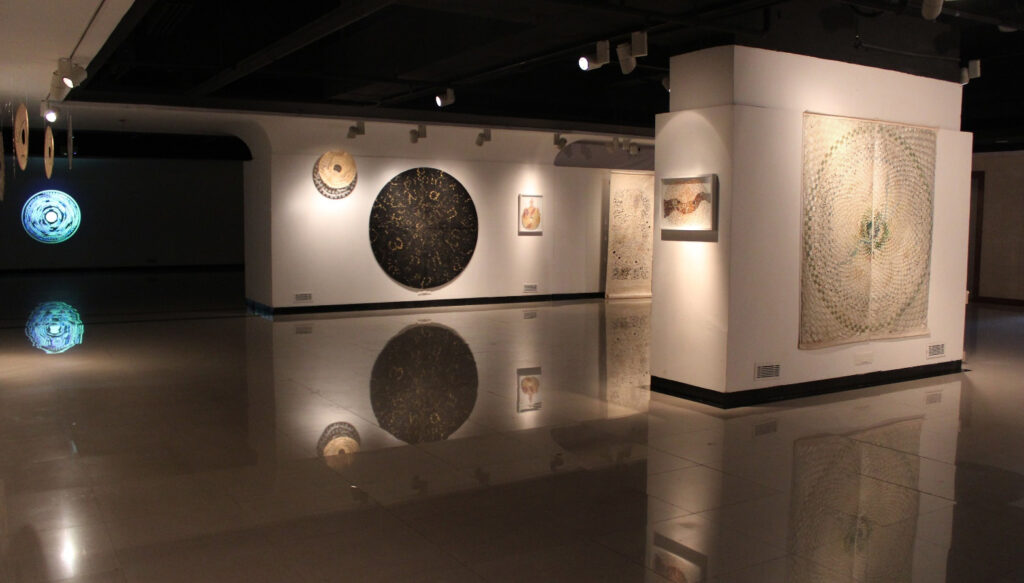
The exhibition offers a journey through celestial cartographies, the result of extensive research between art and science, weaving together momentums: from the primordial origins of human culture—the textiles—to digital and image visualization technologies, a hallmark of our times.
Temples
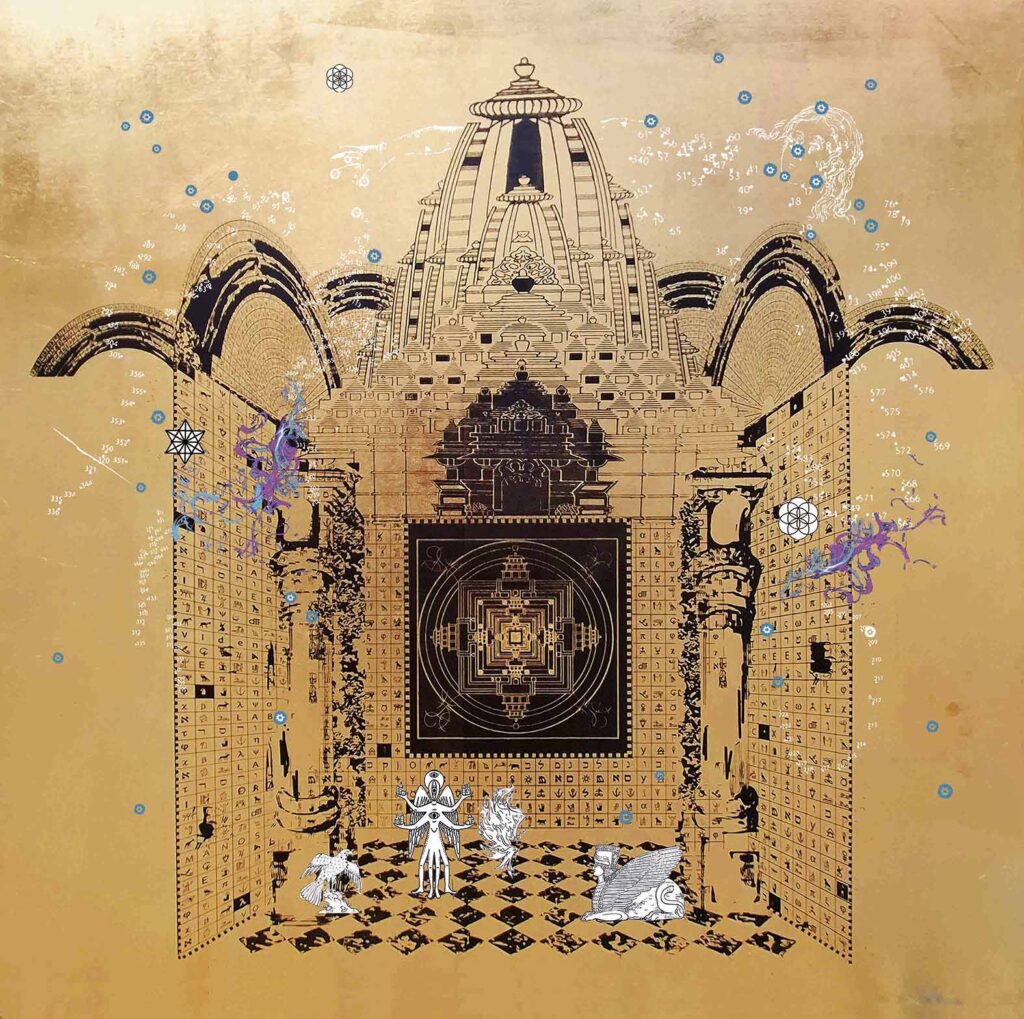
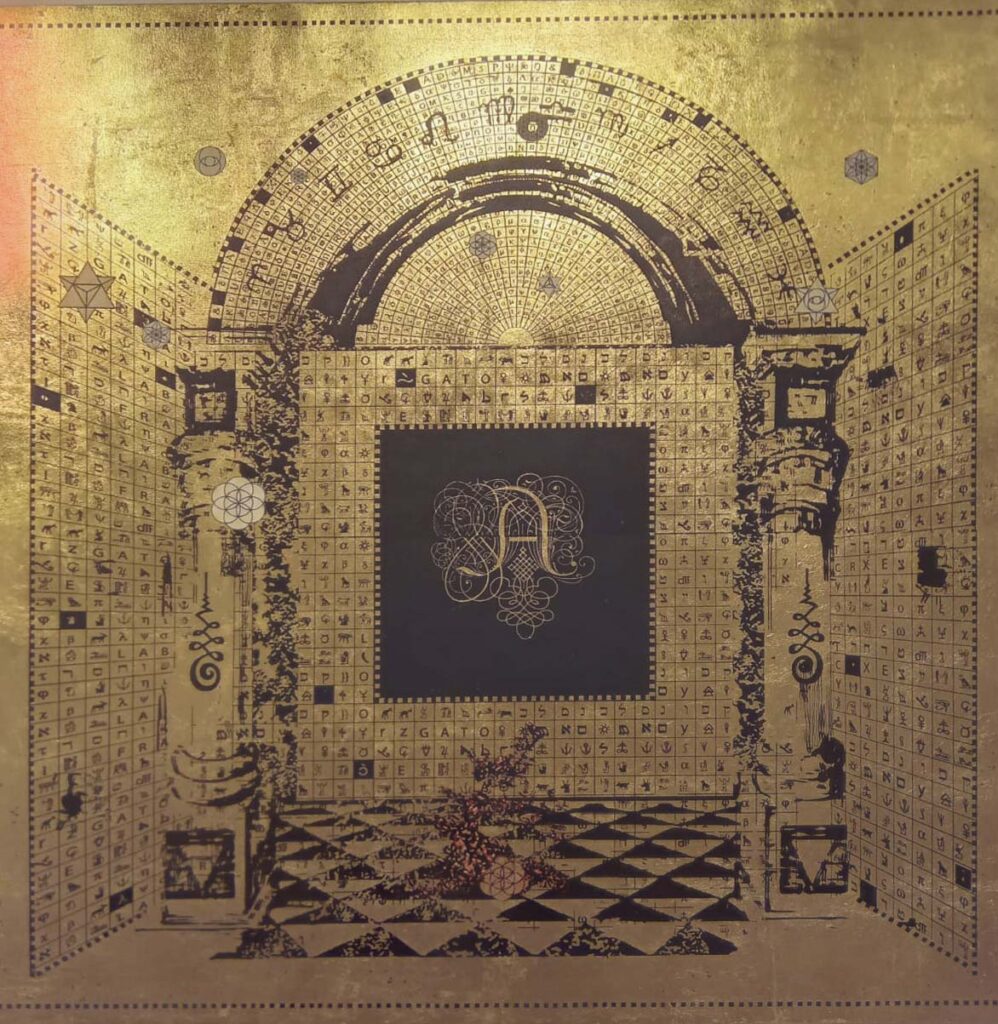

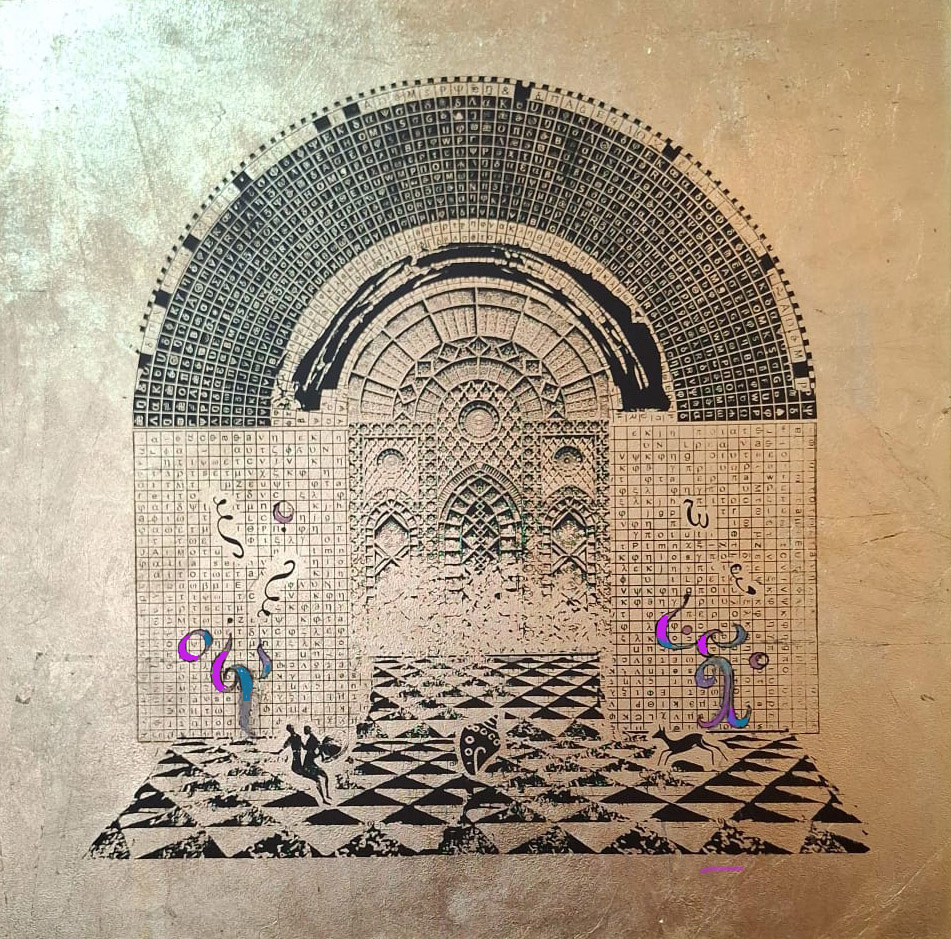
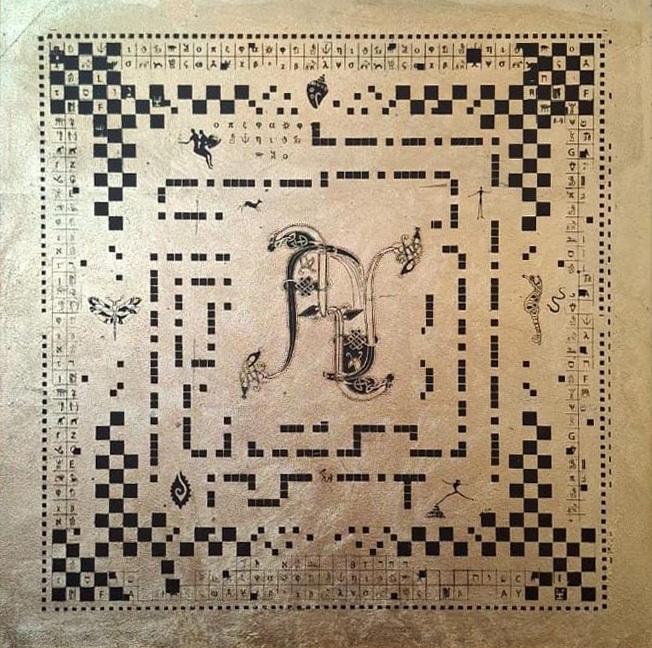
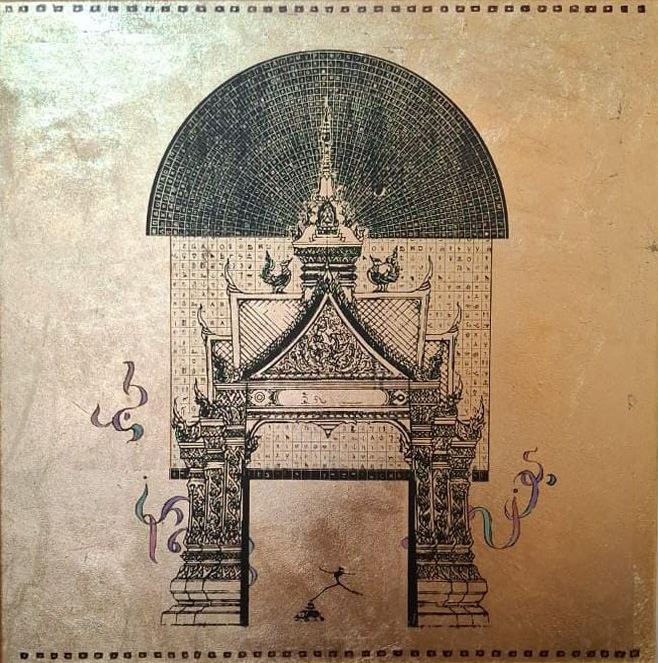
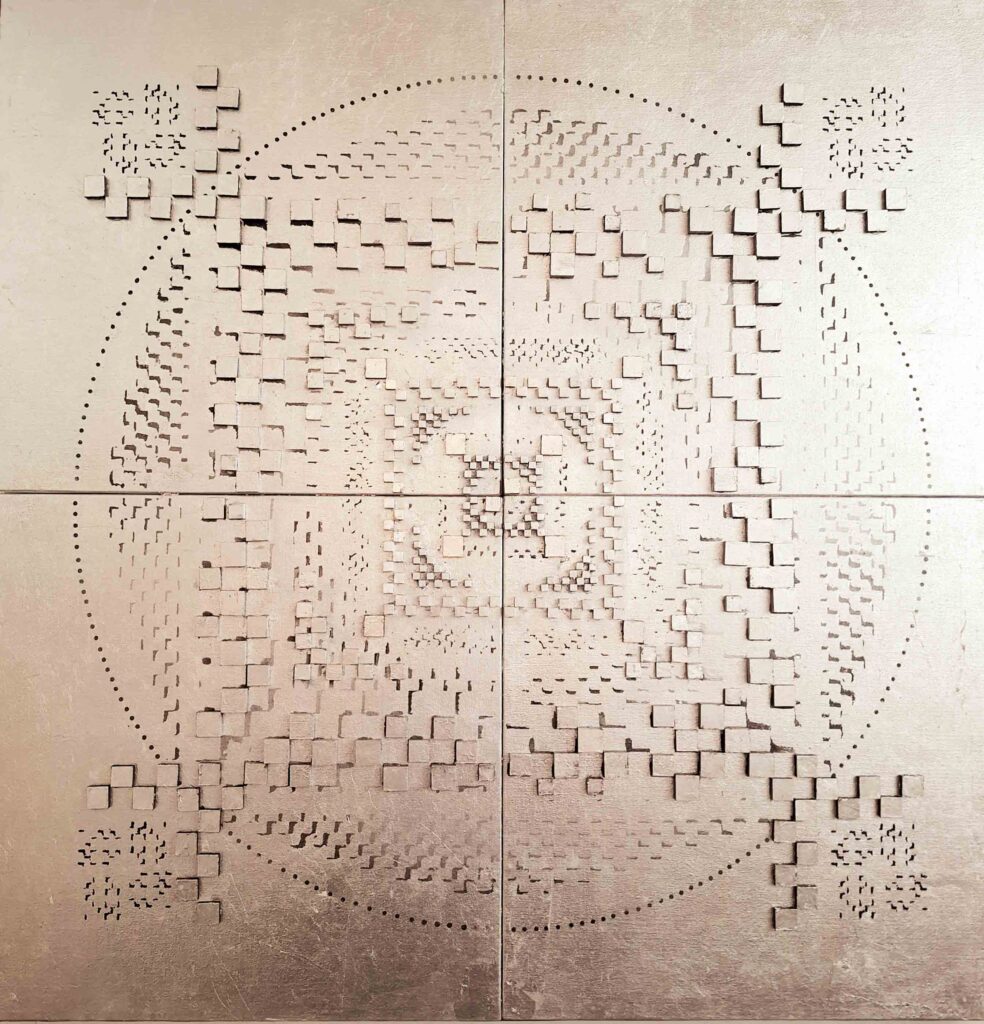

New Delhi , India, 2024
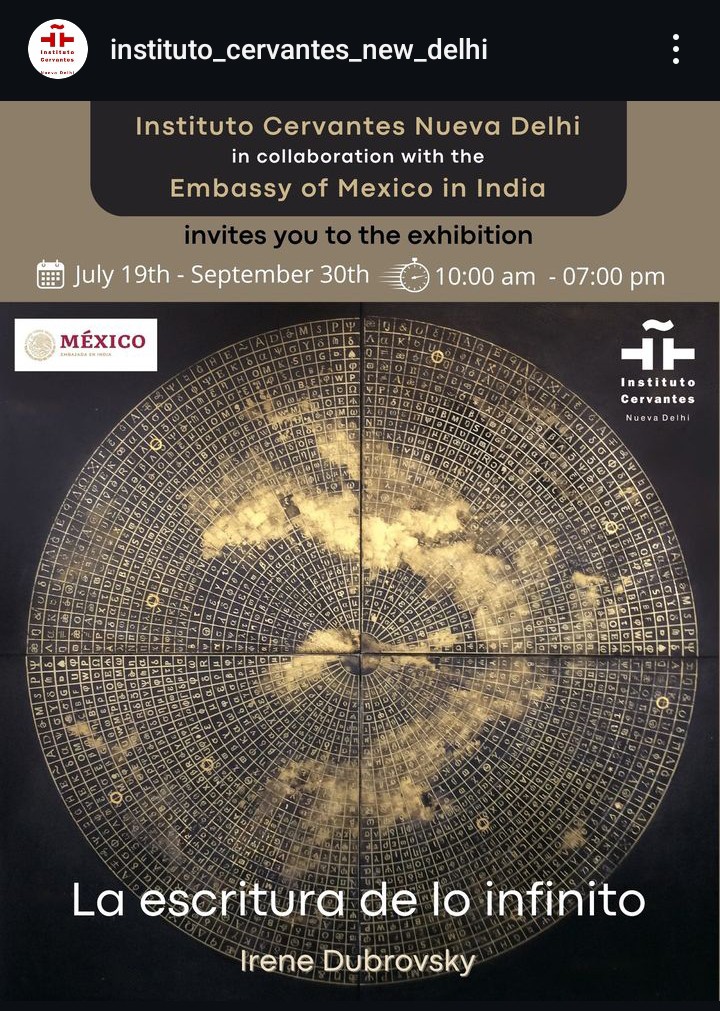
“Signs in Rotation”
In the past decade, Irene Dubrovsky has been creating artifacts of signs; cosmological maps and wheels of writings from myriad traditions, suggesting texts and worlds that unfold before us as fragments of a hermetic tradition. One would not be mistaken to see in these constructions an evocation of hermetic traditions alongside a partially veiled personal testimony, as they largely include a play of inscriptions, erasures, and veils. An important part of her discs of alphabetic signs—or more precisely, phonographies—are inspired by the wheels of alphabetic notations invented by Raymond Lull in the 13th century on the Iberian Peninsula, to introduce movement into the combinatorial play of his interpretation of the “art of memory,” in an attempt to represent the movement of the psyche that diagrams concepts, zodiacal signs, and ideas, in a blend of Neoplatonism and Jewish Kabbalah. Wheels that in the 16th century Giordano Bruno took up again to inscribe the “shadows of ideas” which, inspired by the supposed tradition of hermetic knowledge, promised to return divine powers to man.
For her exhibition in India, Dubrovsky decided to add a floating installation made of signs on paper that transcribes, in various writing systems, the beginning of the poem Octavio Paz wrote in India in the 1960s: “East Slope” (1962-1968). The fragment of the poem titled “The Balcony” contains one of the greatest offerings that the Spanish language has made to the capital of India, the observation that the word “Delhi” contains “two high syllables.” Irene Dubrovsky nods knowingly. Perhaps there is no better way to define her works than the observation that Paz himself made about the nature of the advanced poem half a century ago: a “vibrant space upon which a handful of signs is projected like an ideogram that is a fountain of meanings.” Let these “signs in rotation” serve as yet another attempt to build bridges of images and words between two subcontinents closer than maps and words would suggest.
Cuauhtémoc Medina
